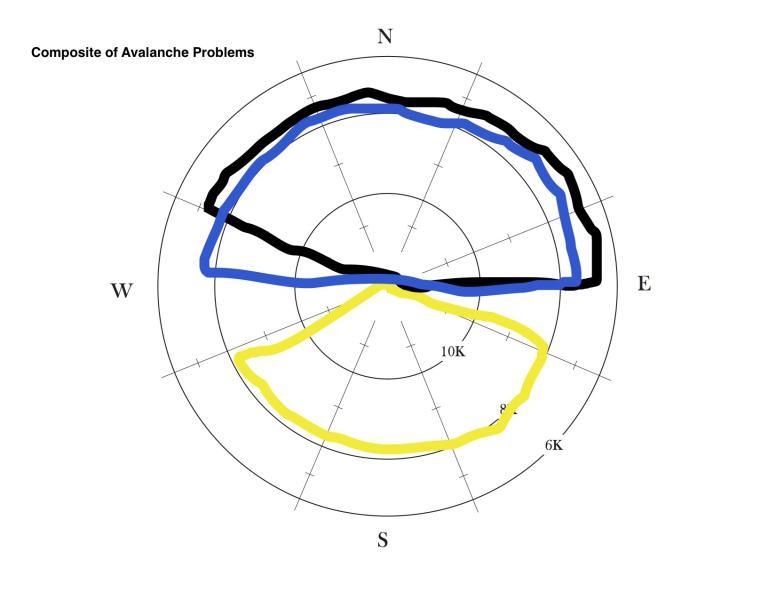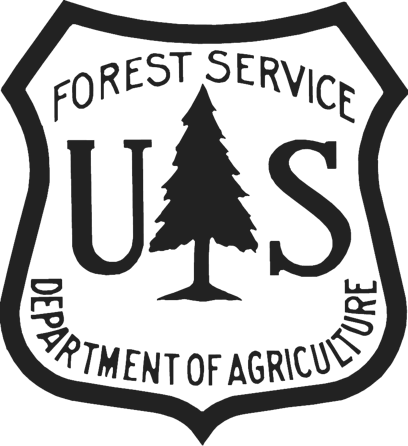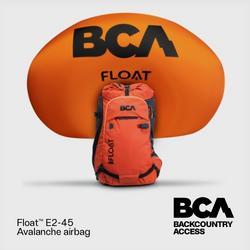Have been thinking quite a bit about our current avalanche problems, and a conversation with a friend using a whiteboard led to this series of images describing my current view of the persistent weaknesses in our snowpack. Some early season snow led to a mid-December snowpack that was shallow and weak. We have had a series of storms since mid-December, with periods of strong wind-loading, dense snow, cold clear spells, and a few avalanche cycles. All of this has led to conditions that are currently as complicated as I can ever remember in the Wasatch.
The heat map on the 1/27 forecast highlights how we have had avalanche issues on all aspects on the danger rose.
Problem #1 - Repeat Offenders. Many steep northerly slopes went through a natural avalanche cycle between the solstice and Christmas. Although these storms produced several large slides, they did not clear out the basal facets, leaving a thin, weak snowpack behind. There have been numerous repeater avalanches on these slopes whenever they receive a new load of snow or wind loading. Of our current avalanche problems, this seems to be the biggest concern.
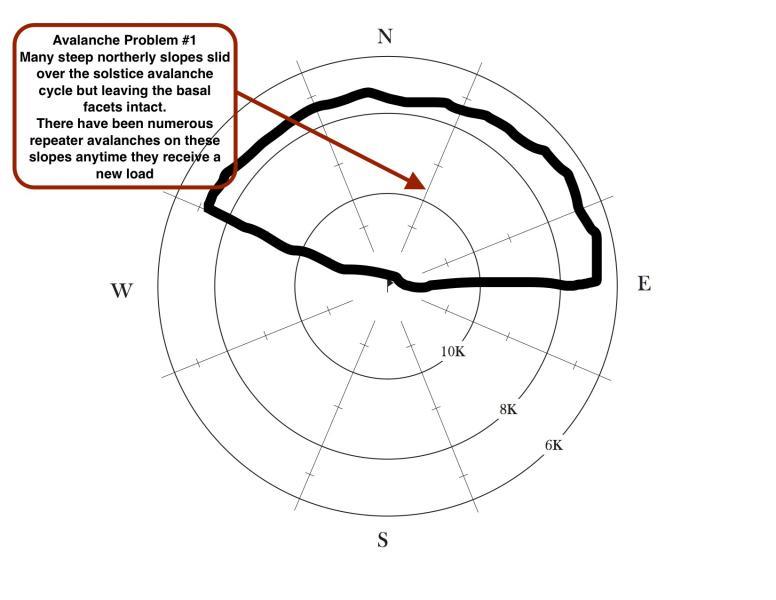
#2 Persistent Slabs. I have been finding several persistent weaknesses in the top 75 cms of snow containing near-surface facets as well as some surface hoar. Although we have enjoyed a very stormy pattern for the past 5 weeks, we have had a few short spells of cold, clear weather that produced weaknesses in the snow surface. These weaknesses have been preserved underneath additional storms. I am finding quite a bit of spatial variability in these layers, but they are widespread enough to give me concern on steep slopes.
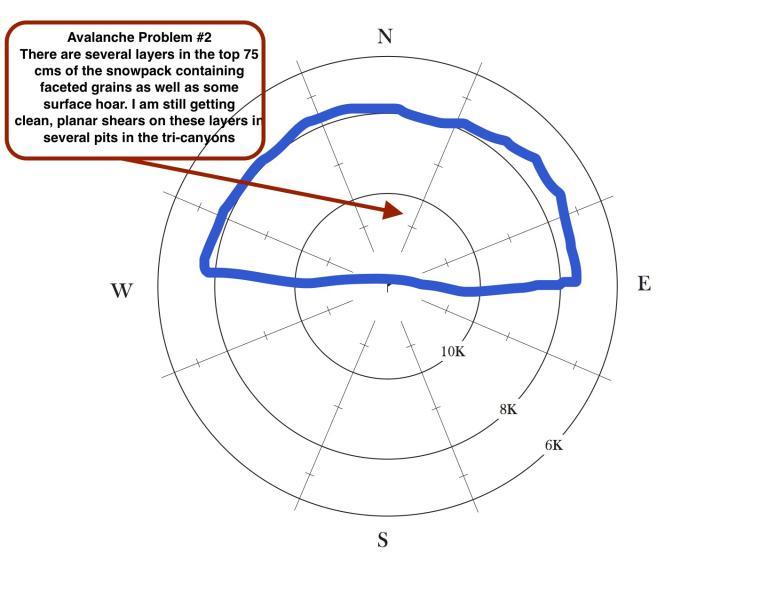
#3 South Aspects. We usually think of south aspects as being safe, go-to terrain when we have persistent weaknesses on northerly aspects. But crusts have formed on south aspects about mid-January, and underneath these crusts weak faceted snow has formed. The crust formation was followed by a relatively prolonged period of moderate to strong west through north winds. This produced strong wind slabs on top of the facet/crust combinations. The avalanche fatality on 1/21 on Gobblers Knob, as well as the natural avalanche on the south face of Gobblers Knob on 1/24 | 1/25 likely occurred because of this structure. Trent has an excellent discussion and video of this problem.
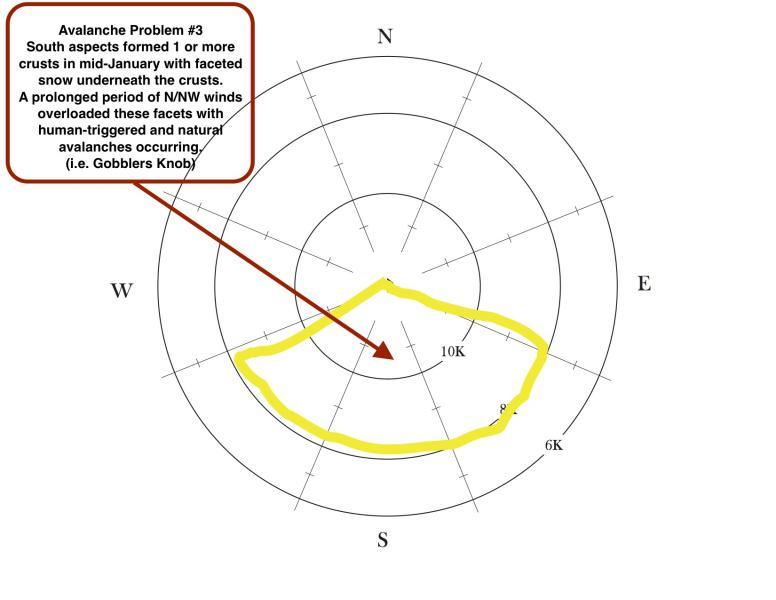
All of which leads to this composite of our current avalanche problems due to persistent weaknesses in the snowpack on all aspects. We can't outsmart the snowpack right now, and conservative travel decisions are really the only option for safe travel.
[NOTE - these graphics are generalized for aspect and elevation.]
